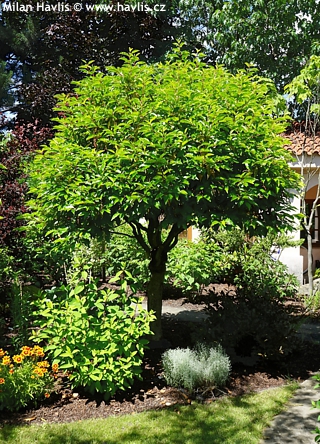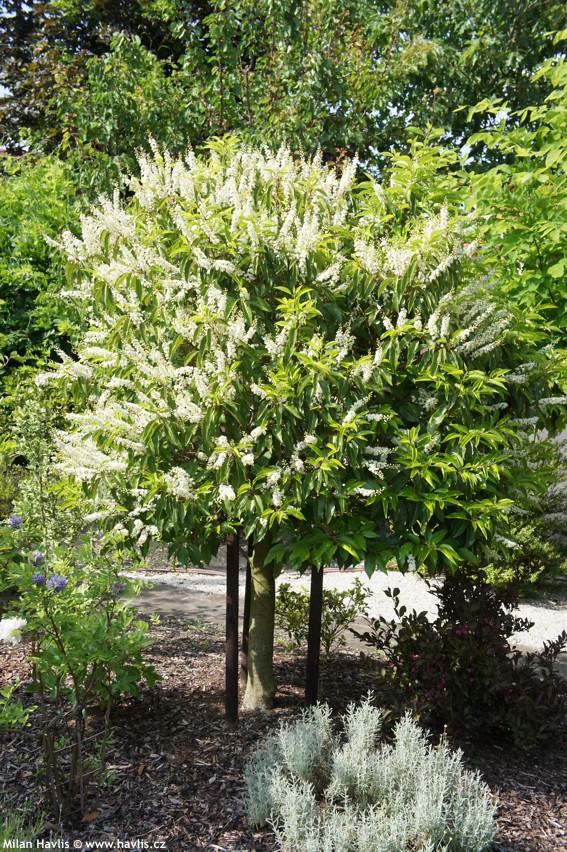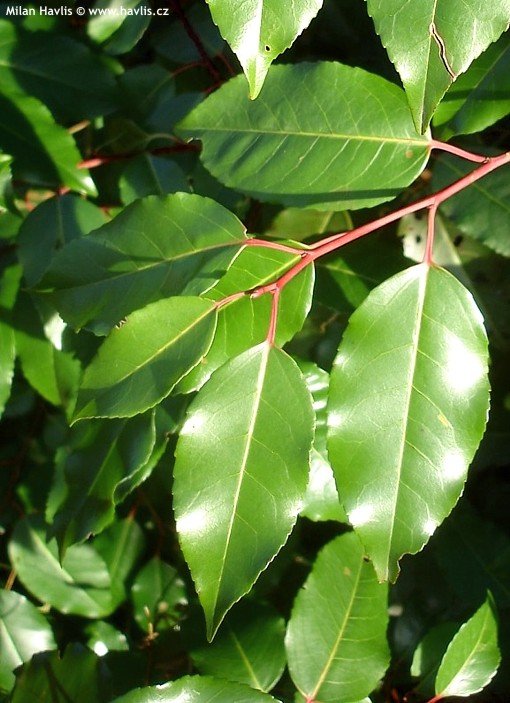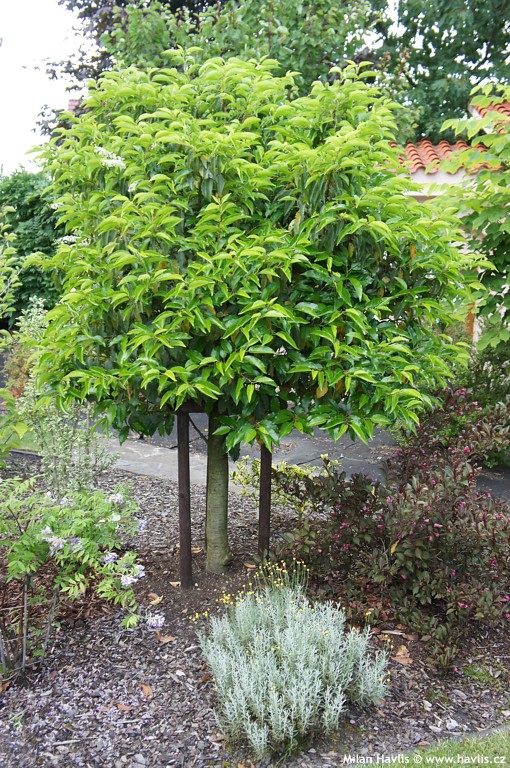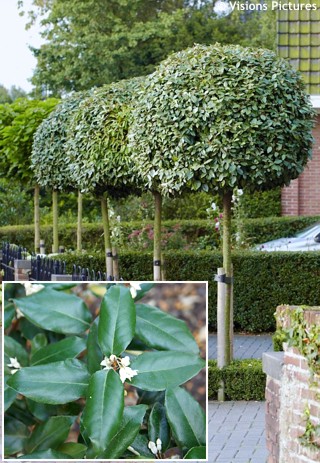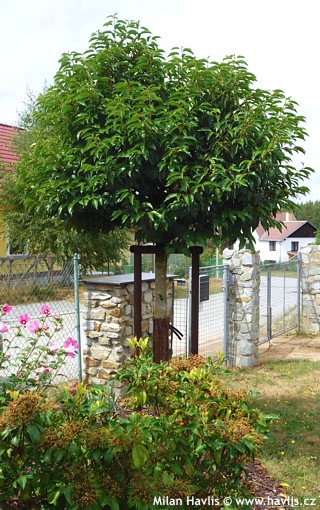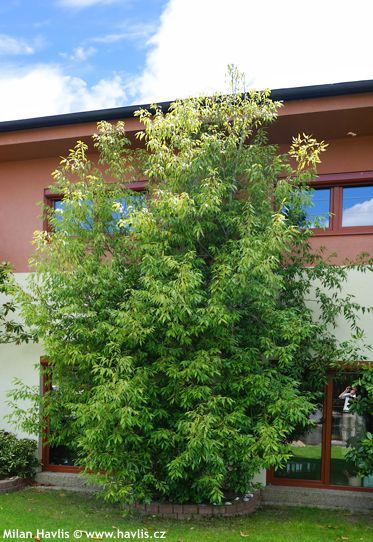Prunus lusitanica Portugal laurel - STANDARD TREE


Prunus
We are specialists in evergreen plants and offer you the hardiest species also as standard trees so you can enjoy rich green foliage all year round even in higher levels of your garden.
Portugal laurel is a great choice that is surprisingly hardier that some large-leaved cherry laurels. It has ovate to elliptic, pointed, mid-sized leaves that are deep green and glossy and have conspicuous red stalks and new twigs, especially in cold winter months. Blossoms are numerous racemes, compound of white, sweetly scented flowers. Fruits are black berries, and tests proved that they are not poisonous, only seeds from unripe fruit can cause stomach discomfort if eaten in quantity.
In good soil it grows moderately or fast and makes quite long, slightly arching branches. The crown is naturally horizontally oval and is often trimmed for a rounded shape. In order to maintain a nice crown shape without bare branches near the trunk light pruning is recommended every 2-3 years. Do this in early April.
Portugal laurel loves full sun and neutral or slightly acid, moist but well-drained soil, rich in organic matter. In locations with cold and long winters we suggest finding it a place without direct winter sunlight that might burn its leaves. Once established it tolerates heavy clay in lower parts and summer dry spells. On the other hand, the moister the soil, the richer and healthier foliage you can expect. In winter provide extra watering in frost-free periods when the ground is not frozen. Reliably hardy to -24°C (USDA zone 6) but withstands short periods of lower temperatures. Freshly transplanted trees have to be staked to support for 2-3 years, and their trunks covered with jute as prevention from drying out in winter and spring.
Last update 17-01-2013

































